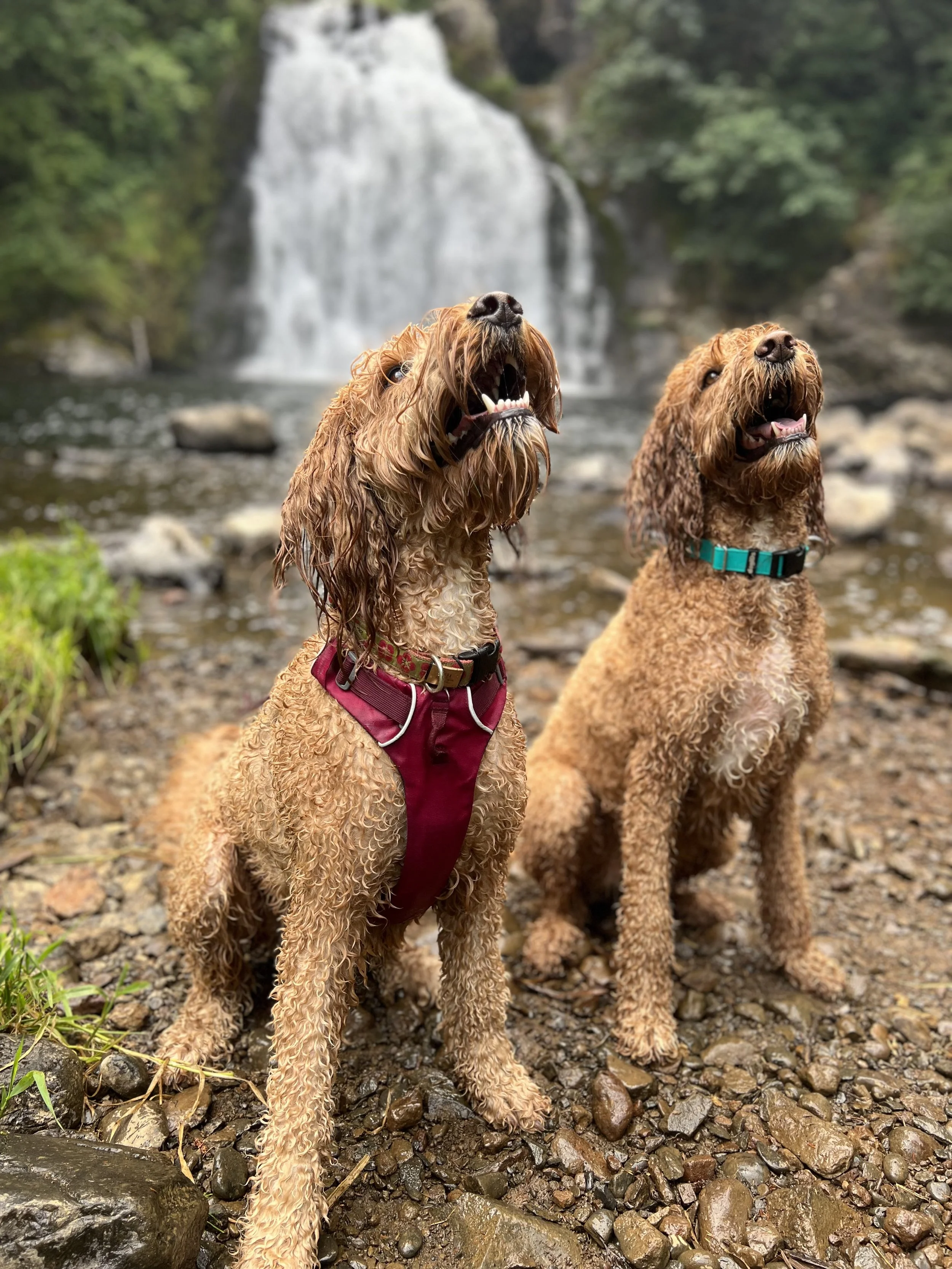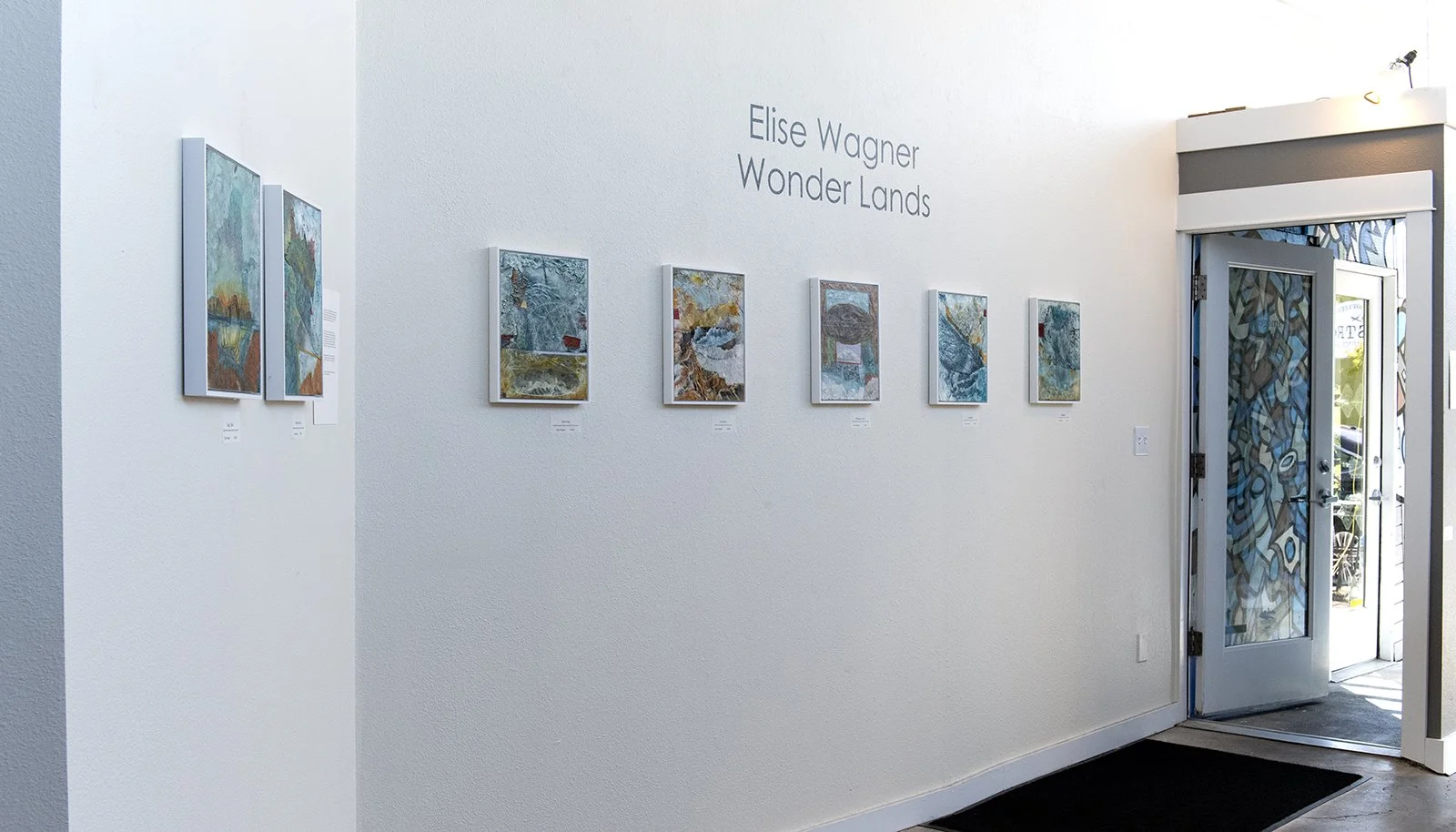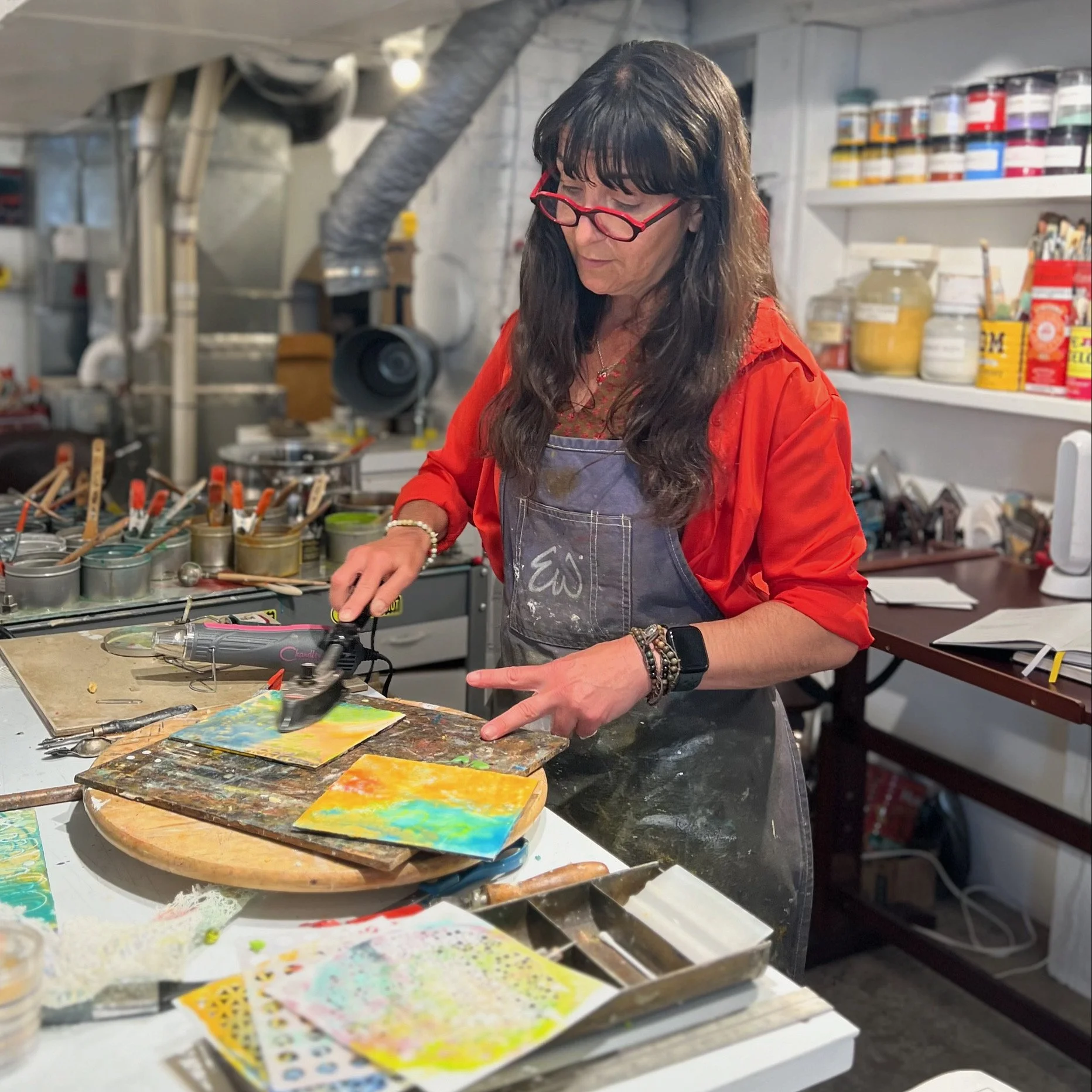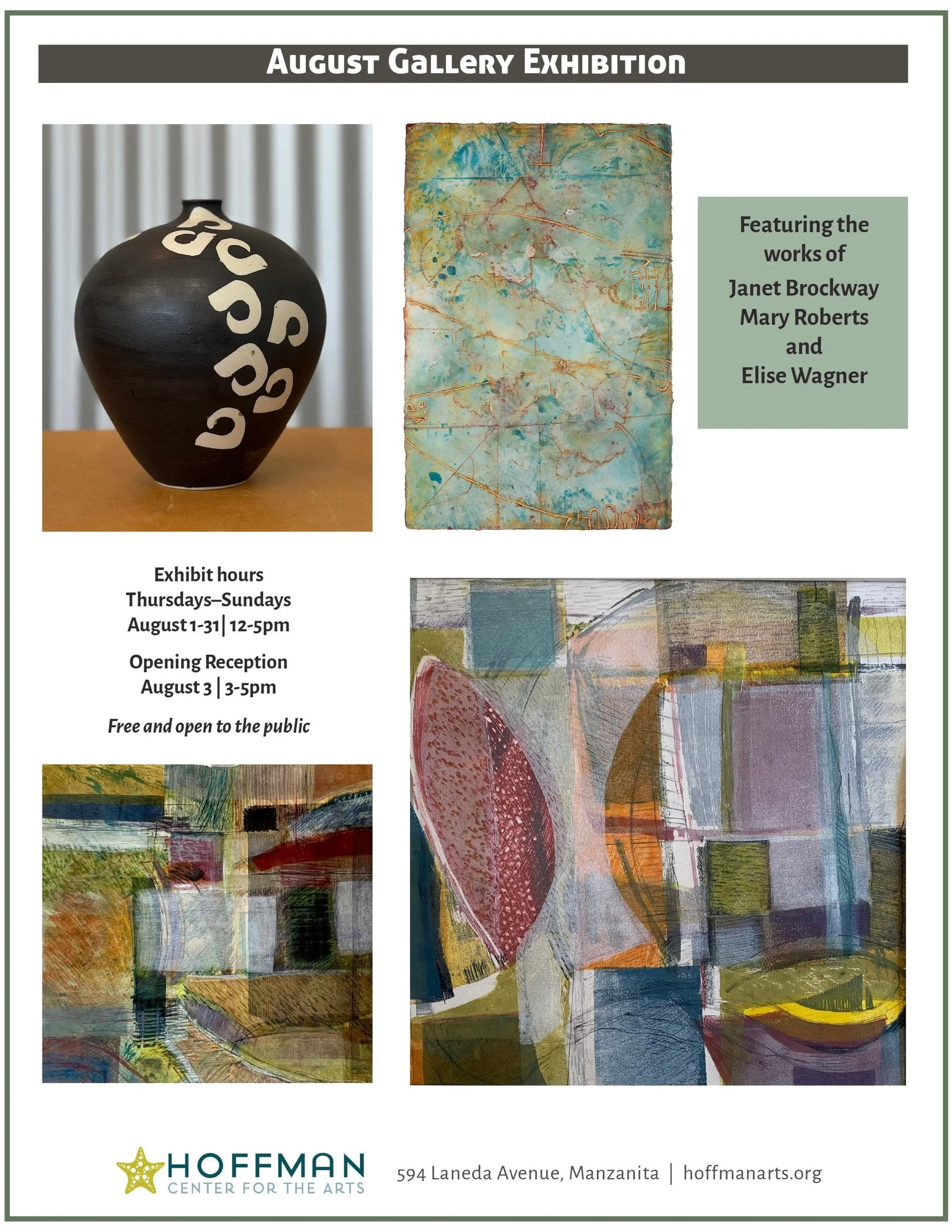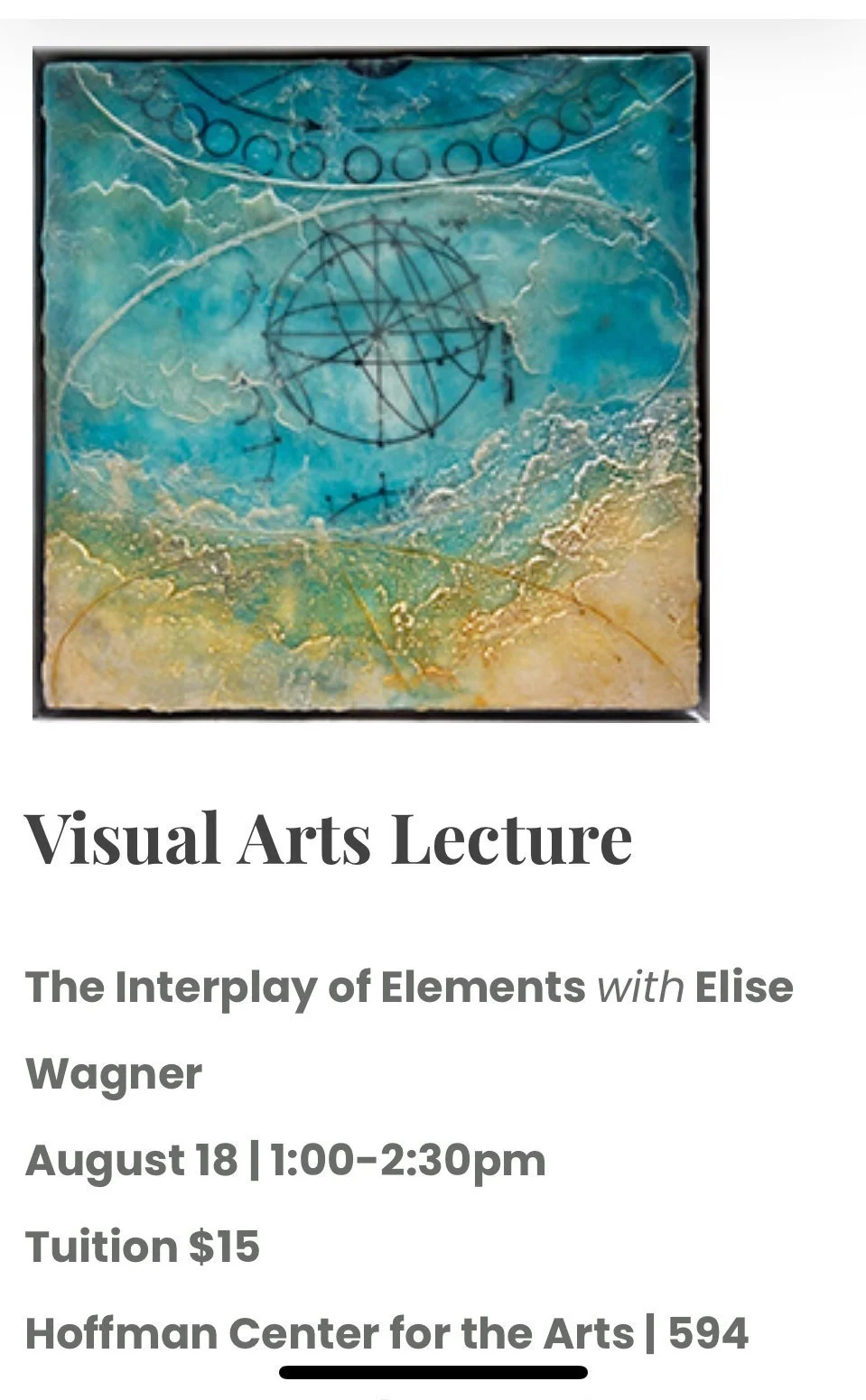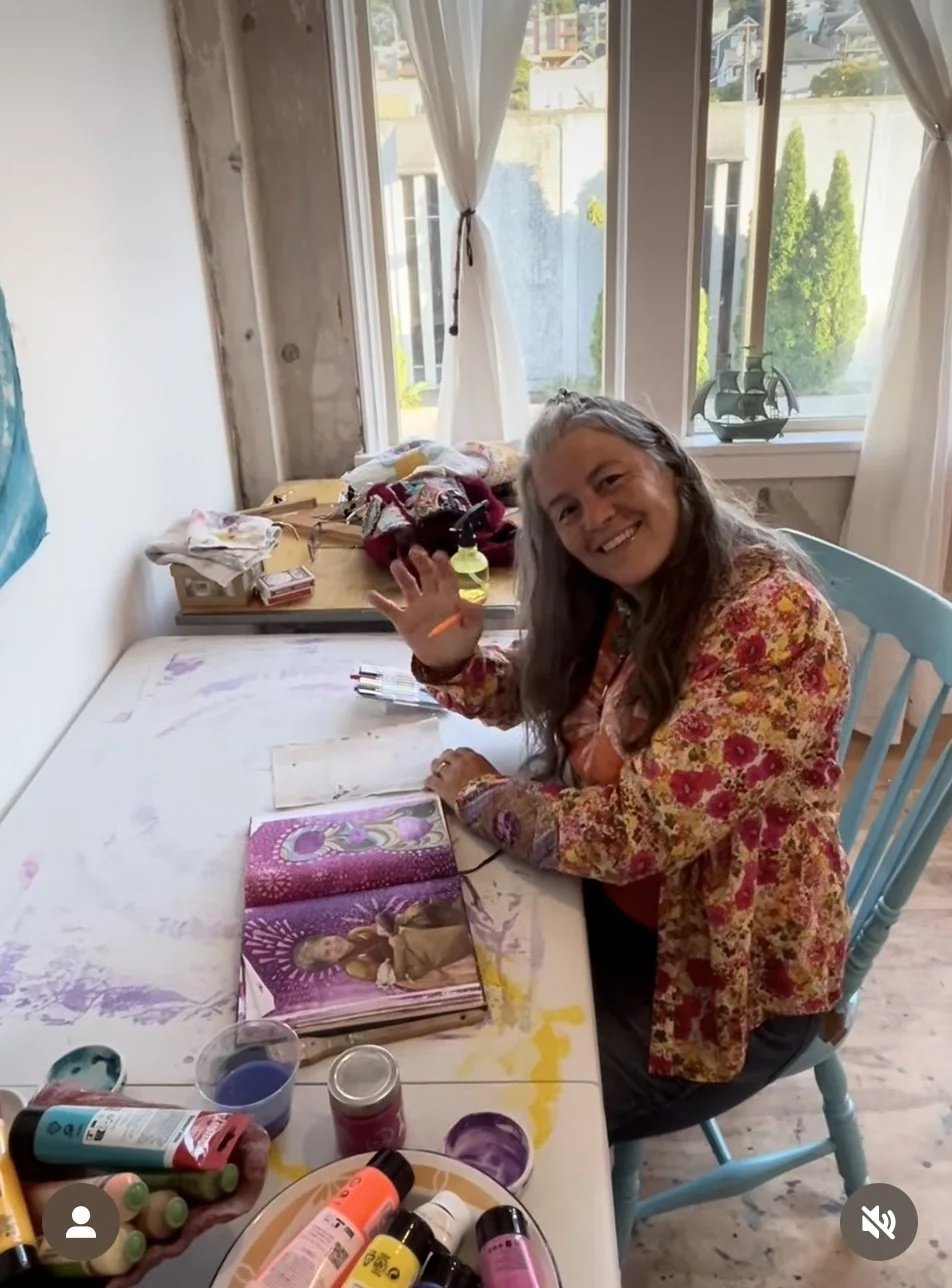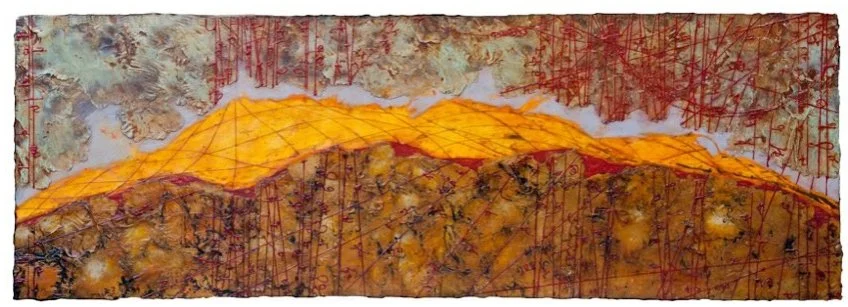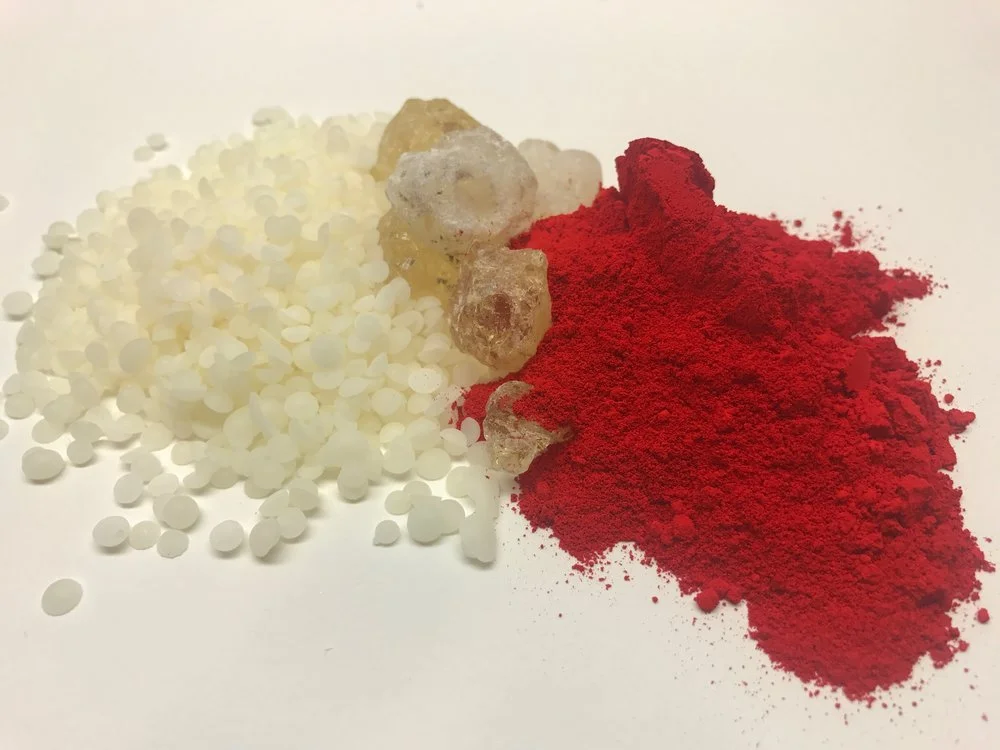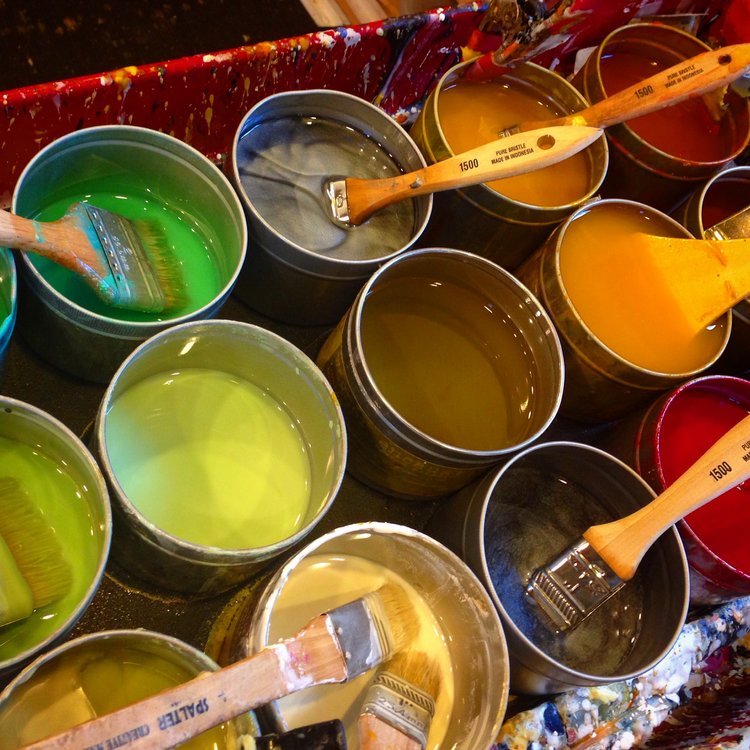A Summer flanked by exhibitions from Astoria to Manzanita and much more.
The girls Willo (right) and Reba (left) at nearby Young’s River Falls
June 2024: Wonder Lands at Imogen Gallery
This Summer has been action packed and flanked by exhibitions on either end beginning in June with my solo exhibition, "Wonder Lands," at Imogen Gallery. The exhibition was an resounding success and I am filled with gratitude for the support and the appreciation I received locally and beyond with a profile in Oregon Arts Watch. Some of the pieces left from the show are hanging at Imogen Gallery in Astoria through August 8th. Catalogues are available for purchase at this link.
The first rainy day in the middle of these dog days of Summer invited me to finally write a blog. Upon waking on Monday morning, I heard this mysterious tapping noise that I didn’t recognize which turned out to be that old familiar white noise comfort of rain hitting the rooftop. Glorious rain! We need rain desparately in many parts of Oregon, California and Canada right now. Living in the Pacific Northwest, I’ve grown more grateful for the rain, especially during the wildfire season. Still, it never ceases to amaze me how when Summer comes, I tend to forget the ecological importance that we and nature in all its fragility so deeply rely.
Each year, as August approaches, I begin longing for the rainy days spent painting in the studio, settling into my new home, writing or making hearty soups and stews. Hopefully the rains will arrive right on time again this Fall. My prayer for the planet is for the rains to always begin here on November 1, with two or three heavy rains in the Summer to keep the wildfires at bay.
Astoria Open Studios Tour
So much has been going on and continues to! This week I am recovering from a very busy Astoria Open Studios Tour on July 27 & 28. After a decades-long tradition of having open studios in my Portland studio that so many of you attended, it was truly heartwarming and exciting to see that tradition continuing this past weekend in this incredibly vibrant and growing community of talented artists. I loved getting to share my process in two well-attended encaustic painting demonstrations to an eager and curious crowd. It inspired the section in the blog below about Caring For, Storing, and Shipping Encaustic Paintings.
Meeting the Community
Great conversations and connections were made with local members of the community, nearby neighbors and many visiting from Portland. Thank you all so much for attending and for signing up for my mailing list. What an incredible community this is to have landed in! It was wonderful to bring new energy into my temporary basement studio which I broke in with the creation of my recent Wonder Lands exhibition.
Community Highlight
Now in its 14th year, the Astoria Open Studios Tour featured 50 artists this year, that’s a lot for a town of 12,000 people! It is a free and annual event produced by Astoria Visual Arts (AVA), which is celebrating its 35th year as an arts organization that aims “to create opportunities for people of all ages and walks of life to engage with the arts.”
August 2024: Exhibition at the Hoffman Art Gallery in Manzanita
August will begin with the great honor of being invited for an exhibit and artist lecture at the Hoffman Gallery in beautiful Manzanita, an Oregon Coast gem of a destination just south of Astoria. The exhibit will feature five of my encaustic pieces along withe work of Mary Roberts and Janet BrockwayThe exhibition will be on view through August 31st.
Visual Arts Lecture at Hoffman Art Gallery The Interplay of Elements
As part of the exhibition at the Hoffman Center for the Arts, I was also invited to give a Visual Arts Lecture at the Hoffman Gallery Exhibit entitled The Interplay of Elements, this is a ticketed event. I look forward to visually sharing with fellow art enthusiasts, an overview of the many applications, integrations and discoveries I have made over the past 30 years working with encaustic painting; the ancient medium that incorporates the elements of air, fire and earth. If you are looking for an excuse to visit the Oregon Coast, join me, I’d love to see you either at the reception August 3rd from 3-5pm or for the Visual Arts Lecture August 18th at 1pm or both! You can find more information and purchase tickets here.
Each year, AVA awards an artist a residency that provides six months of free studio space above the AVA Gallery. The residency culminates with a solo exhibition in the AVA Gallery in January 2025. I am so thrilled that my friend Jenny Rideout is the current AVA Artist in Residence. More information about AVA, its membership, board and programming can be found here.
Caring For, Storing and Shipping Encaustic Paintings
For all of you art materials geeks out there, I just finished repariing and restoring an encaustic artwork read on…
“Absolute Horizon”, encaustic and oil on panel, 24” x 70” Featured in a 2017 blog post.
Just after Wonder Lands opened in June, I embarked on a fairly extensive repair and restoration of a large encaustic painting by a Bay Area artist for a collector of mine. The repair and restoration of encaustic paintings is a service I have specialized in for several years. I thought I’d share a little bit of detail about the medium and what goes into the storage, shipping and care of encaustic paintings along with a link to a blog I wrote Repairing a Frozen Encaustic Painting about the restoration and repair process of the below pictured painting.
Wax, resin and pigment
Encaustic, meaning, “to burn in”, is the oldest known pigment binder that combines natural beeswax, resin and pigment. My thanks always goes first to the honeybees for making beeswax in protection of their honeycombs. Without the bees, encaustic painting would not be possible. Part of what I will be talking about in my Interplay of Elements Visual Arts Lecture on August 18th is how I work with the elements of air — the air from a heat gun, fire — the flame of a blow torch and earth — the use of pigments and resin from the earth.
Encaustic medium, beeswax and resin.
Dammar resin is natural and derives from a group of East Indian trees. The Dammar is added to harden the wax. Introduced in the nineteenth century for use primarly as an oil painting picture varnish, Dammar has also been used as a varnish for furniture and for various conditions in Ayurvedic medicine.
Encaustic medium with pigment in it which makes the paint.
When making encaustic medium which is the clear base of beeswax and Dammar resin combined, I make sure my proportions remain in that fine line between the stickiness of the wax and the hardening of the resin. If too much resin is in the medium, the wax is also prone to becoming brittle and cracking over time. I also go “thin to win” in how I apply layers and divert from pouring the wax.
At my recent open studio, the question came up “because the painting is made of wax, would it be prone to melting?” My answer is always not as much as you would think. While it’s true the wax of an encaustic painting will melt in certain conditions such as a burning building or a painting left in the trunk during a heat wave then yes, encaustic paintings are prone to becoming soft or melting. The real culprit in my experience of repairing work of my own and many other artists has been cold and severe temperature fluctuations.
After determining through pictures that the extent of the damage was repairable, six 16” x 16” panels among a nine panel piece arrived with severe and deep cracks in it. I remembered seeing it hanging in a popular Portland restaurant. The restaurant has since closed and had returned the painting on loan by my collector who then placed it in storage for several months. The change from restaurant to storage in a building with fluctuating temperatures is likely what could have caused the damage. It took me fifteen hours to repair the piece. It was a little complicated as some of it had come apart and buckled from the substrate. All in all everyone was pleased at the outcome of the repair. Here are a few things to keep in mind if you own an encaustic painting.
Future care of encaustic paintings:
The luster on encaustic paintings can change over time due to temperature variences. If it is very hot, they can get a bit dull. This can be resolved by buffing it with a soft non-fiber cloth.
Always store encaustic paintings in a termperature controlled room when not displayed.
When transporting, shipping or storing encaustic paintings, always be aware of temperature where the painting is going to be and every spot along the way.
When on private or public display, encaustic paintings should always be indoors at room temperature. The buffing is something that can be done for cleaning as needed if the surface dulls due to temperature variances.
Frame in the edges of encaustic paintings with floater style frames when possible, no glass on the front is needed. The edges of encaustic paintings can be prone to incidental damage in transport.
Ideally, encaustic paintings should be transported in a temperture controlled van.
Shipping should be in a box or crate lined in layers of 1” rigid styrofoam, glassine archival paper on the face and clear plastic sheeting. Encaustic paintings are most sensitive to severe hot and cold temperature fluctuations. It is always recommended to check the weather when shipping from warmer to cold Winter climates.
If you have an encaustic painting in need of repair, see this information page about my services and feel free to contact me directly.

